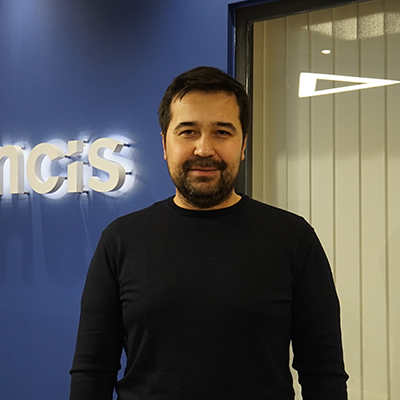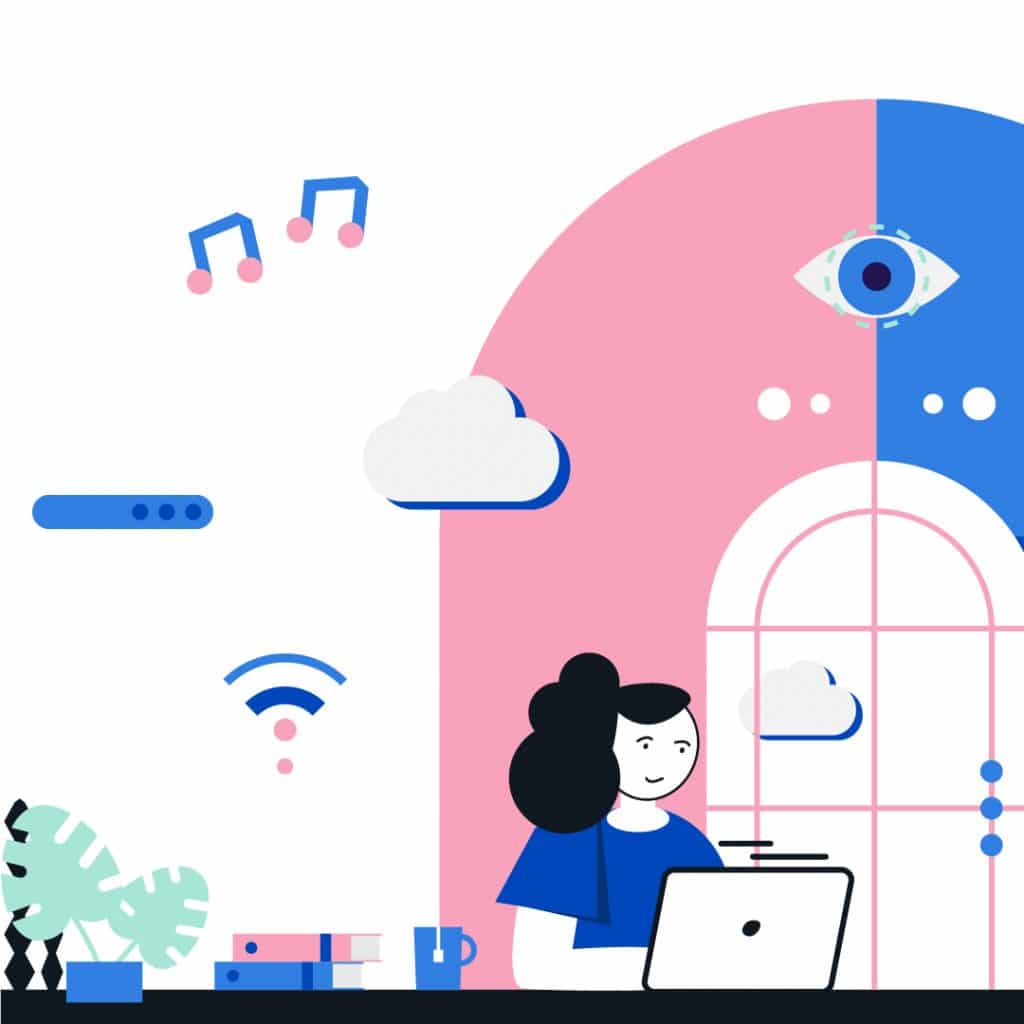How to Add Flutter to Your Existing App
How to Add Flutter to Your Existing App
Today, every company is busy developing a myriad of apps for the product, and users know that there’s an app for just about every product they’ll use. Many of these apps have developed over a few years, and many of them were hastily put together to get to the market ASAP.
But as technology changes and as users’ expectations grow, apps need to be constantly redeveloped and redesigned. Flutter 1.0 popped onto the scene in December of 2018, and Flutter 1.22.0 just arrived with extensive support for iOS 14 and Android 11 in the Fall of 2020, the most stable build yet. Despite having only recently arrived, Flutter is already arguably the world’s most popular multi-platform mobile app development framework. It was developed by Google, and is thus compatible to operate with Android, iOS and for Google’s yet to be fully unveiled open source capability-based operating system, Google Fuchsia¹.
You have an existing app with a different code base – why would you start using flutter?
So flutter comes with a number of benefits. Flutter is a more performance-driven mobile app development framework, written in Dart, and it is incredible fast performing, interacting efficiently and easily with native device components. It’s google supported, which means there are thousands of developers around the world who can help in the development process in addition to Google’s own support team. The widgets Flutter uses makes the code reusable across platforms, so it’s incredibly compatible. And it’s all easy to set up.
So there are a number of advantages to using Flutter, but perhaps you’re worried that integrating a new language and new development framework to a preexisting one will cause problems?
Don’t worry! You can use Flutter to build on new features of the app and integrate them seamlessly!
Whether you’re using iOS or Android, you don’t have to rewrite the entire app to put it in Flutter. Flutter isn’t that difficult to simply integrate into your existing app as a library or as a module. You can import that module into your iOS or your Android app so that that piece of your UI is in Flutter while the rest is still in its existing base code.
How can you integrate Flutter for Android applications
There are a number of things that Flutter allows you to do to integrate it into preexisting Android apps. These include:
- Being able to build a Flutter module right into an Android Archive, or AAR, so that it fits into your own build system.
- A module creation/import wizard that allows for Android Studio co-editing between Android and Flutter
- The ability to support both Java and Kotlin apps
- The way in which Flutter plugins can integrate and conform to the preexisting platform and how Flutter modules can then be seamlessly integrated as a result.
- When you add a Flutter SDK hook to your Gradle script, this allows you to auto build and important whichever Flutter module you’ve created.
- The FlutterEngine helps you create and continue your Flutter environment so that it’s easy to attach other Flutter widgets and modules.
- Once you integrate Flutter, you can also use Flutter Attach from IDEs so you can connect to the app.
How can you integrate Flutter for iOS applications
Flutter’s compatibility with both iOS and Android is what makes it so attractive to developers. Flutter modules can be integrated similarly to iOS as they can to Android:
- It supports Objective-C and Swift host apps
- Flutter can be easily integrated into the build system and iOS Framework used.
- The FlutterEngine helps you create and continue your Flutter environment so that it’s easy to attach other Flutter widgets and modules.
- The way in which Flutter plugins can integrate and conform to the preexisting platform and how Flutter modules can then be seamlessly integrated as a result.
- Once you integrate Flutter, you can also use Flutter Attach from IDEs so you can connect to the app.
- You can easily add a Flutter SDK hook to CocoaPods and to Xcode when you auto-build and import the Flutter module.
Key Takeaways
Flutter is a fantastic cross platform app development framework. Its language of Dart is compatible with both iOS and Android. But you might think that you need to completely start from scratch if you want to incorporate it into your app infrastructure, and you’d be wrong. You can integrate individual modules into your app for either iOS or Android without deleting or changing your existing base code, allowing you to bring your app to the next level and into the future.
¹ https://fuchsia.dev/
Reading Time: 6 minutes
Don’t miss out the latestCommencis Thoughts and News.

Murat Ergun / Senior Engineering Manager
19/10/2020
Reading Time: 6 minutes
Today, every company is busy developing a myriad of apps for the product, and users know that there’s an app for just about every product they’ll use. Many of these apps have developed over a few years, and many of them were hastily put together to get to the market ASAP.
But as technology changes and as users’ expectations grow, apps need to be constantly redeveloped and redesigned. Flutter 1.0 popped onto the scene in December of 2018, and Flutter 1.22.0 just arrived with extensive support for iOS 14 and Android 11 in the Fall of 2020, the most stable build yet. Despite having only recently arrived, Flutter is already arguably the world’s most popular multi-platform mobile app development framework. It was developed by Google, and is thus compatible to operate with Android, iOS and for Google’s yet to be fully unveiled open source capability-based operating system, Google Fuchsia¹.
Don’t miss out the latestCommencis Thoughts and News.
You have an existing app with a different code base – why would you start using flutter?
So flutter comes with a number of benefits. Flutter is a more performance-driven mobile app development framework, written in Dart, and it is incredible fast performing, interacting efficiently and easily with native device components. It’s google supported, which means there are thousands of developers around the world who can help in the development process in addition to Google’s own support team. The widgets Flutter uses makes the code reusable across platforms, so it’s incredibly compatible. And it’s all easy to set up.
So there are a number of advantages to using Flutter, but perhaps you’re worried that integrating a new language and new development framework to a preexisting one will cause problems?
Don’t worry! You can use Flutter to build on new features of the app and integrate them seamlessly!
Whether you’re using iOS or Android, you don’t have to rewrite the entire app to put it in Flutter. Flutter isn’t that difficult to simply integrate into your existing app as a library or as a module. You can import that module into your iOS or your Android app so that that piece of your UI is in Flutter while the rest is still in its existing base code.
How can you integrate Flutter for Android applications
There are a number of things that Flutter allows you to do to integrate it into preexisting Android apps. These include:
- Being able to build a Flutter module right into an Android Archive, or AAR, so that it fits into your own build system.
- A module creation/import wizard that allows for Android Studio co-editing between Android and Flutter
- The ability to support both Java and Kotlin apps
- The way in which Flutter plugins can integrate and conform to the preexisting platform and how Flutter modules can then be seamlessly integrated as a result.
- When you add a Flutter SDK hook to your Gradle script, this allows you to auto build and important whichever Flutter module you’ve created.
- The FlutterEngine helps you create and continue your Flutter environment so that it’s easy to attach other Flutter widgets and modules.
- Once you integrate Flutter, you can also use Flutter Attach from IDEs so you can connect to the app.
How can you integrate Flutter for iOS applications
Flutter’s compatibility with both iOS and Android is what makes it so attractive to developers. Flutter modules can be integrated similarly to iOS as they can to Android:
- It supports Objective-C and Swift host apps
- Flutter can be easily integrated into the build system and iOS Framework used.
- The FlutterEngine helps you create and continue your Flutter environment so that it’s easy to attach other Flutter widgets and modules.
- The way in which Flutter plugins can integrate and conform to the preexisting platform and how Flutter modules can then be seamlessly integrated as a result.
- Once you integrate Flutter, you can also use Flutter Attach from IDEs so you can connect to the app.
- You can easily add a Flutter SDK hook to CocoaPods and to Xcode when you auto-build and import the Flutter module.
Key Takeaways
Flutter is a fantastic cross platform app development framework. Its language of Dart is compatible with both iOS and Android. But you might think that you need to completely start from scratch if you want to incorporate it into your app infrastructure, and you’d be wrong. You can integrate individual modules into your app for either iOS or Android without deleting or changing your existing base code, allowing you to bring your app to the next level and into the future.
¹ https://fuchsia.dev/




